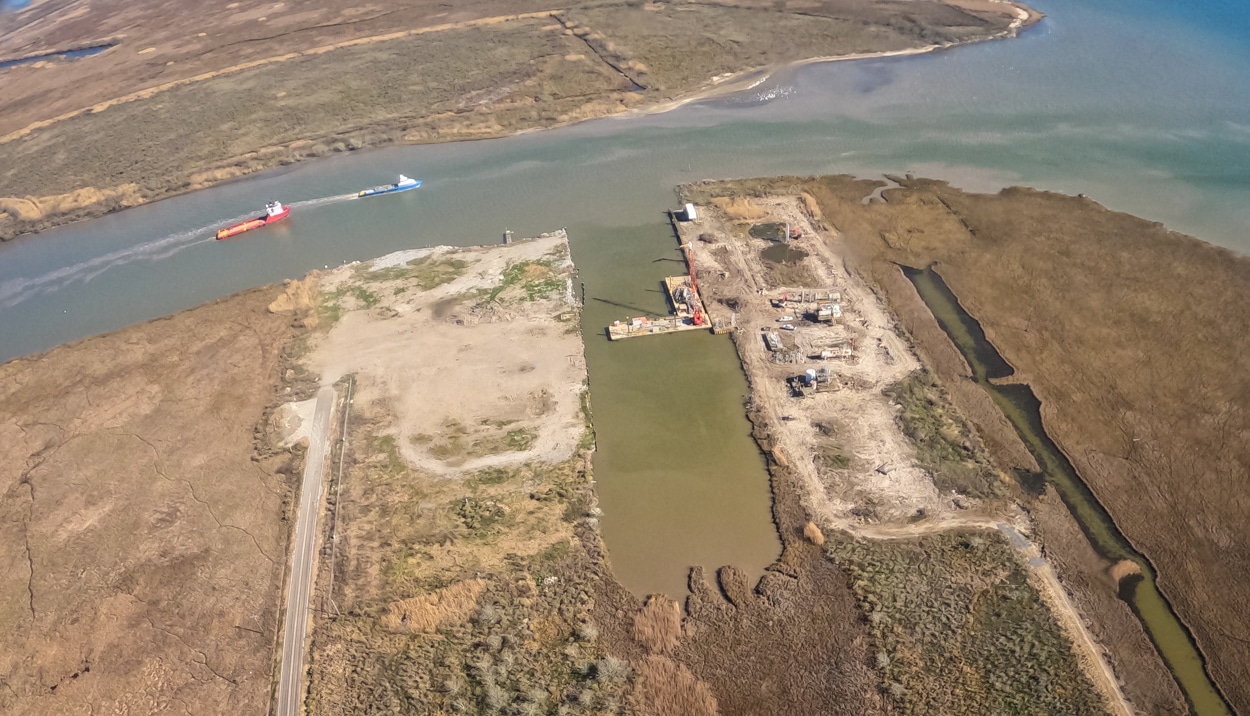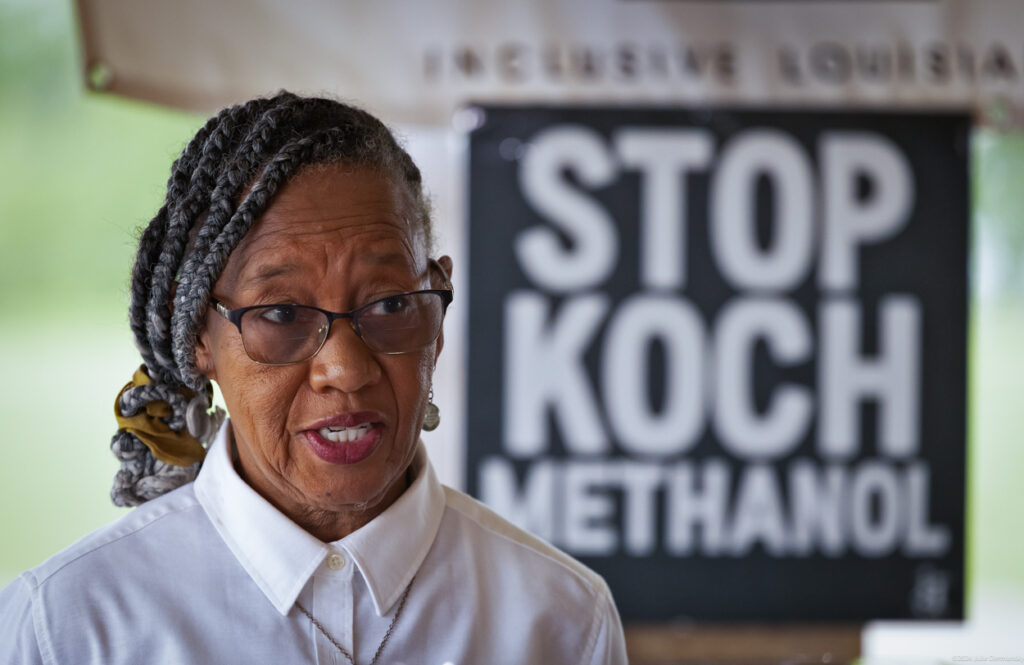If you had ventured down a dirt road running through remote marshland along the Gulf Coast in Vermilion Parish, Louisiana, at just the right time back in late February, you might have come across a pit of gray muck. Down in that pit, you’d find a contractor welding a steel cap about the size of a dinner plate onto a stub of pipe jutting up from the mud below.
That pipe was the last visible sign of an old oil and gas wastewater well that once dropped over a half-mile deep into the earth, now plugged up and sealed by contractors hired by the state.
For decades, oil and gas companies disposed of millions of barrels of waste down that hole, ringed with cement and steel, dubbing the wastewater well Freshwater City SWD 01, according to state records.
Experts told DeSmog the well was defective and that using it put underground supplies of drinking water in the area at risk.
“It’s a mess,” said Cornell engineering professor Anthony Ingraffea, who reviewed public well records provided by DeSmog and found that Freshwater City was riddled with flaws.
That means the process of “abandoning” the old well creates new problems. “If they just do the usual plugging job, and now there’s a suspicion that this well was leaking over some period of time and contaminating the water supply,” he said, “you’ve lost the opportunity to do the diagnosis.”
Properly plugging and abandoning oil and gas wells is vital to protect the environment and stop methane leaks – but for decades, oil operators have often slipped away without paying to clean up, leaving millions of deteriorating abandoned wells across the U.S.
The abandonment of Freshwater City played out amid a firestorm of infighting and allegations of public corruption surrounding Louisiana’s orphan well plugging program, documents show. The tangle of fights between Louisiana officials over this one site offers a preview of battles that could be on the way across the U.S., potentially affecting the ultimate fate of millions of abandoned oil industry wells.
Ranking Louisiana’s Orphan Wells
Freshwater City has ties to some of the world’s biggest oil giants but wound up on Louisiana’s orphan well list, putting the burden on the state to fund its cleanup and attempt to recoup costs later.
The wastewater well sits on land that’s owned by ExxonMobil, was drilled by ConocoPhillips, and eventually wound up run by a tiny start-up called Black Elk Energy that specialized in wringing out the last dregs of oil from aging wells.
Black Elk went belly-up in 2015 after a deadly explosion on one of its offshore platforms — leaving a bankruptcy judge in Texas to decide how the company’s remaining assets should be split between workers and the families of those killed and those to whom Black Elk owed money, including contractors hired to plug and abandon its wells.
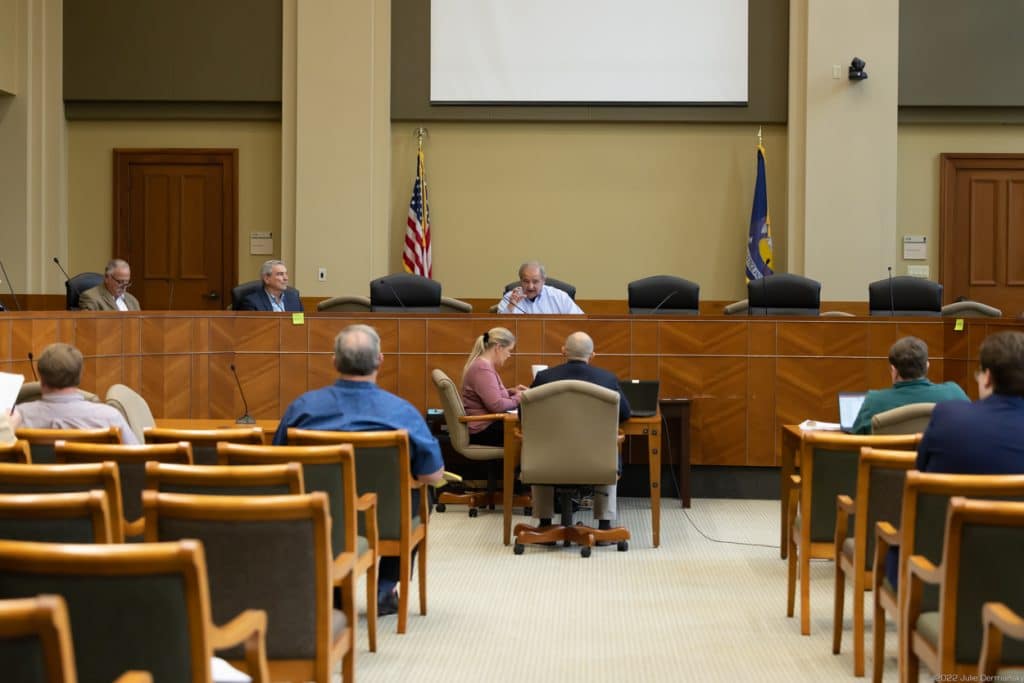
DNR currently lists over 4,600 orphan wells in Louisiana, including oil and gas producing wells and injection disposal wells where oil and gas industry waste is gotten rid of deep underground.
The environmental threat from orphan wells and the difficulty and expense of plugging varies radically across the U.S., and regulators in different drilling regions face different issues. Done right, plugging can stop climate-warming methane emissions and other environmental issues like water contamination. In some cases, plugging wells removes a costly obstacle to companies that want to exploit the surrounding land, like nearby oil and gas drillers, who may need the wells to be plugged first.
Regulators in Louisiana – like those all across the U.S. – lack enough funding to properly plug and abandon every orphan well. Even with the influx of federal funds, only a small fraction of the wells can be cleaned up, leaving a large number behind.
So how do state regulators decide which sites to choose first? It’s different in each state, but in Louisiana there is no strict ranking system that dictates the order wells should be plugged, as oversight commission meeting transcripts show. As part of its Oilfield Site Restoration (OSR) program, Louisiana’s Department of Natural Resources (DNR) scores each site, adding points for a variety of red flags, in an effort to identify which sites are particularly problematic or slated for “potential economic development.”
“This is taxpayer money that was expended on a false document. I’m astounded.”
David Levy, Louisiana Oilfield Site Restoration Commissioner
At a heated April meeting of this program’s oversight commission, Commissioner David Levy demanded to know why the Freshwater City disposal well was plugged before actively polluting oil and gas wells. Companies had already stopped pumping in more wastewater years ago – and if Freshwater City had leaked when it was in use, as experts feared, those leaks would have flown into aquifers deep underground where inspectors couldn’t see them.
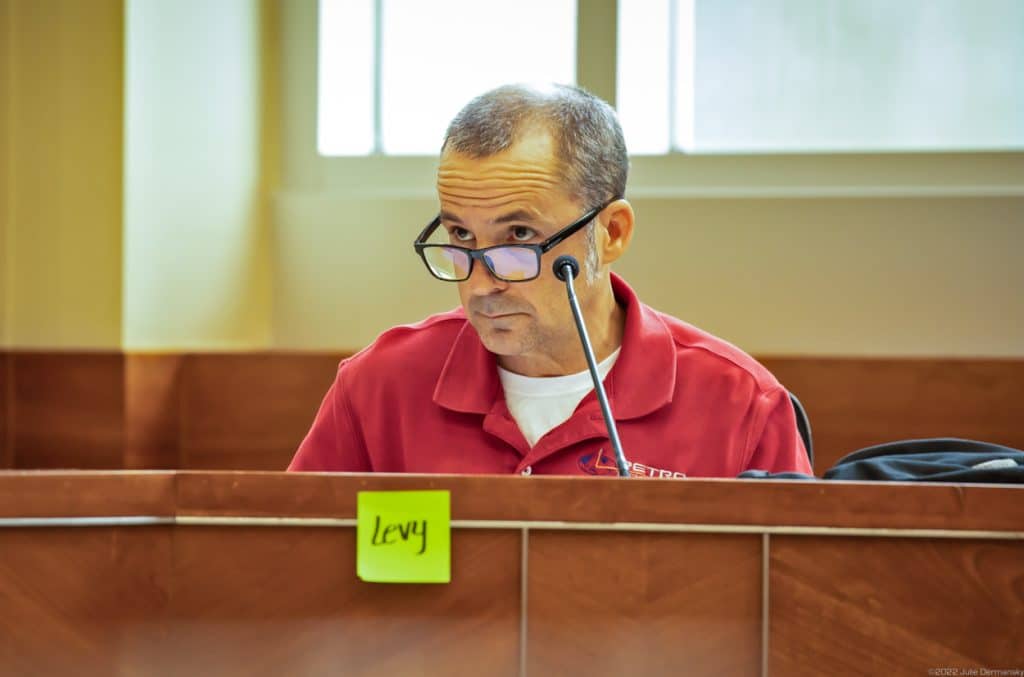
Levy, owner of Petrotechnologies, a company that makes specialty parts for the oil and gas industry, charged that DNR didn’t follow its own standard operating procedures when it bumped Freshwater City up the list. DNR added points to Freshwater City’s score for a “missing or damaged” wellhead, Levy pointed out, even though the inspection report the score was based on indicated no wellhead damage and no leaks found at the surface.
“This is taxpayer money that was expended on a false document,” Levy, the most recent commissioner appointed, told the other oversight commissioners, pointing to over a half million dollars in costs for the project. “I’m astounded. I don’t know where — what to do with this.”
The final bill for Freshwater City isn’t yet in, DNR told DeSmog, but a spokesperson estimated costs might have reached up to $700,000. That would mean that the project cost nearly ten times the roughly $71,000 it cost DNR to restore an average orphan well from 2008 to 2019, state records show.
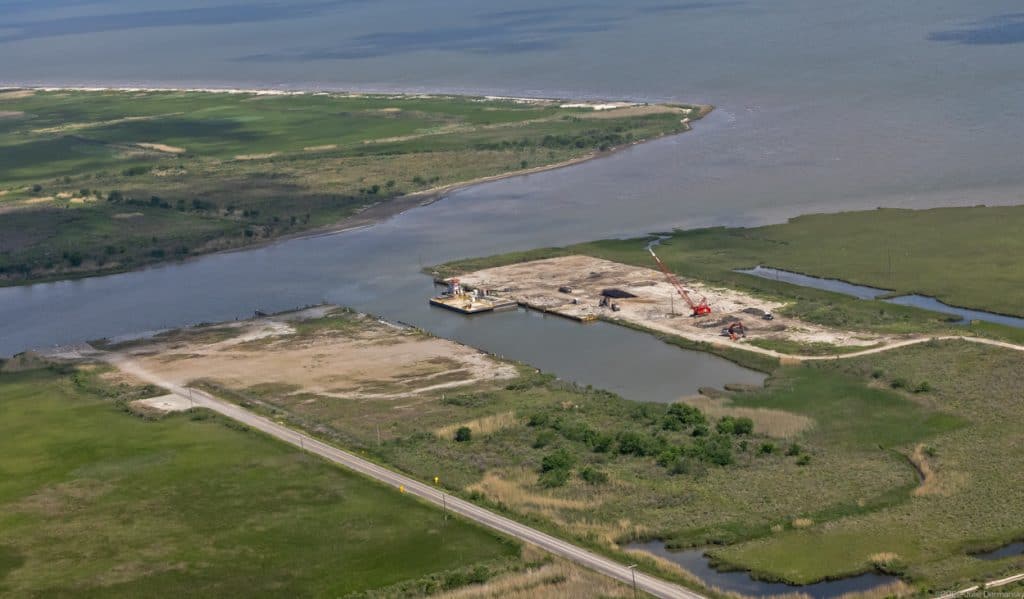
Some of the state’s highest scoring orphan wells have obvious methane leaks, have no wellhead left, or are close to habitat for endangered species.
Levy was puzzled to find lower-scoring wells were slated to be plugged before wells that were more dangerous to the environment and public when he reviewed DNR’s choices. Freshwater City jumped out at him, he said, because it consumes a large chunk of the fund’s annual budget and it is located on ExxonMobli’s land.
At the April oversight meeting, Levy asked if DNR had updated their standard operating procedures, a revision due in 2018. DNR said the agency likely had not, but would look into it.
DNR spokesperson Patrick Courreges told DeSmog that the agency’s decision to plug Freshwater City was based on damage to its storage tanks from Hurricane Laura in 2020 and not just the score at the heart of Levy’s objections. “If you look at our checkboxes, ‘migrating tanks’ is not on there,” he said about the decision to add points for a damaged wellhead. “So we think what our inspector did was just say, ‘okay, that’s part of the well set up, so I’m going to count it as that.’ We didn’t have a way to check a box and say okay, ‘tank batteries have left the building.’”
But Levy, who took aerial photos of the site, dismissed DNR’s claims that the storm damaged tanks represented a threat to the public. He told DeSmog that, like Cornell’s Ingraffea, he’d also become concerned that by plugging Freshwater City, state regulators had made it much more difficult and expensive to trace any possible past water contamination back to the companies responsible.
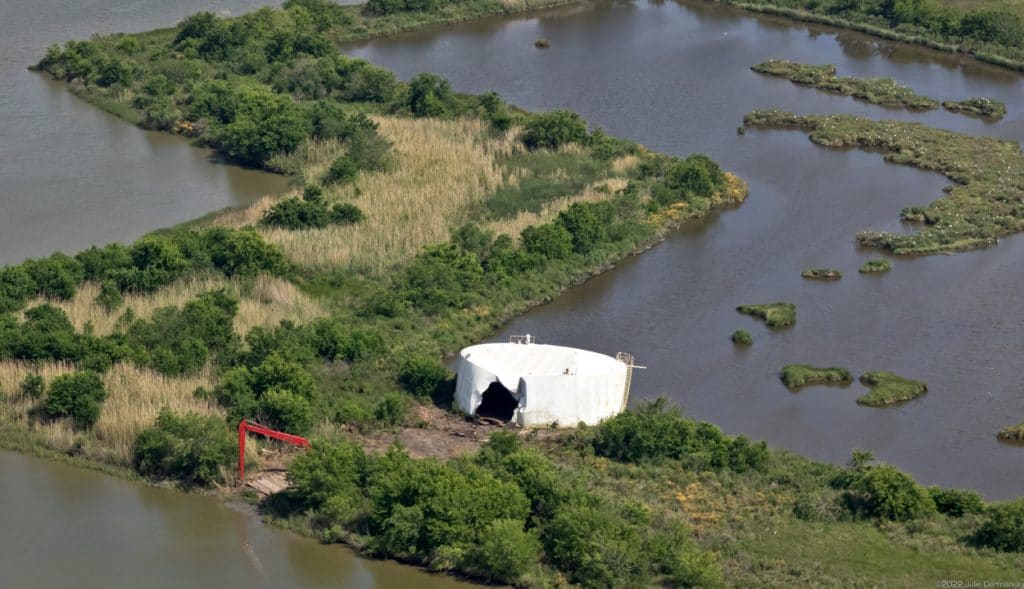
Registered drinking water wells nearby include both shallow wells and others reaching over 600 feet down, state data shows.
When asked if there was reason to be concerned the well could have caused water contamination below ground during the decades it was used to dispose oilfield waste, Ingraffea replied: “Absolutely.”
DNR, which permitted the injection well back in 1972, oversaw its use for decades, and ultimately arranged for its plugging and abandonment, told DeSmog it believes water contamination was unlikely. “Our folks aren’t seeing a good pathway for injection fluids to have gotten out,” Courreges told DeSmog.
“If you tried to get us to permit a well in that configuration today, we would not permit it,” he said, saying the well had been grandfathered in by DNR during the early 1980s. He said the agency was looking into allegations that DNR should have caught problems at Freshwater City in the 1990s, when the well underwent another review to see if it met federal standards. He agreed that Freshwater City had some problems but disputed others, saying that it “would probably pass” those federal standards, in DNR’s view.
Courreges confirmed DNR does not test for groundwater contamination when injection wells are plugged. “Unfortunately, we’re not set up to do that,” he said, noting that testing adds costs. “That probably would be one for the landowner to try and take up with the operators up the chain, if they can.”
“Nobody’s complained to us,” about their drinking water, Courreges noted. “That’s not the same as saying that it’s not possible.”
ExxonMobil and ConocoPhillips did not respond to questions from DeSmog, including when asked if the companies were aware of any groundwater pollution related to Freshwater City.
A Trip to Freshwater City
As with so many oil industry orphans, the story of Freshwater City runs from riches to rags, a Horatio Alger tale spun in reverse.
About a century ago, famed businessman E.A. McIlhenny, whose family made its fortunes producing Tabasco Sauce, bought up a 150,000-acre swath of swampland in Vermilion Parish along the coast of southern Louisiana.
It was “all part of this grandiose vision that he had to set up a great hunting and fishing and recreational facility,” Judge William P. Edwards III, then-president of Vermilion Corp., one of a host of corporations that eventually grew out of McIlhenny’s plans, explained to historians, “a place for northerners to come down and sort of snowbird.”
Enticed by the discovery of oil and gas in the region, Humble Oil (now ExxonMobil) bought up Vermillion Corp.’s land in 1958, then leased the surface rights back to Vermilion.
Some of Humble Oil’s executives seem to have found their way to living out McIlhenny’s dream themselves. In 1958, Humble wound up being offered ten memberships in the private club that leased the property’s best hunting grounds, Judge Edwards said, adding that Humble divided those memberships among the oil company’s executives.
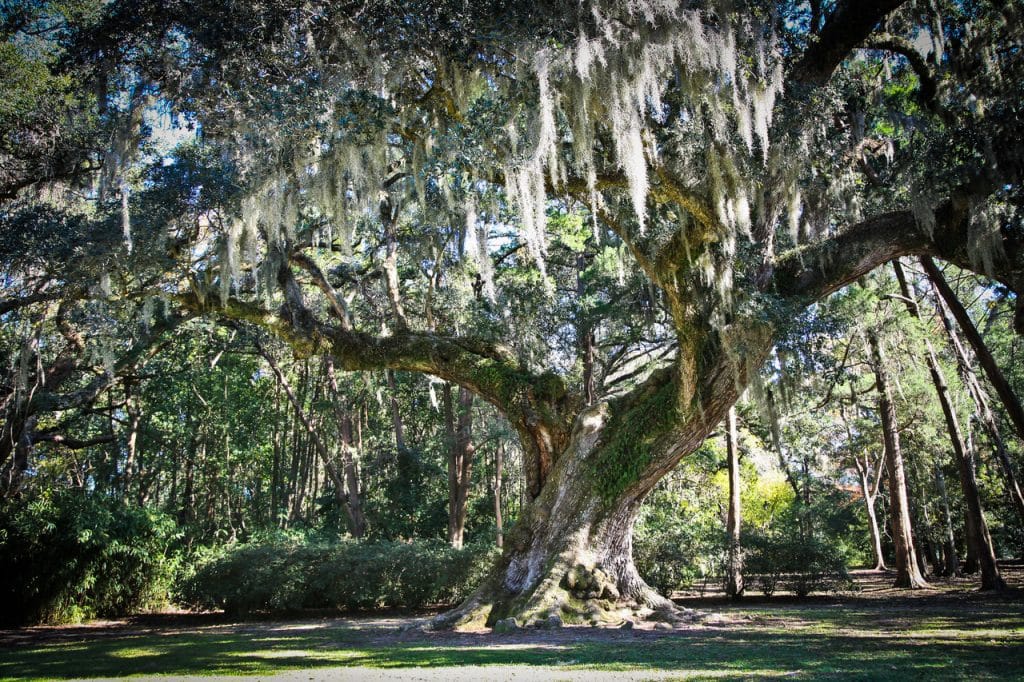
For decades, a blend of crude and water flowed from offshore oil wells to Freshwater City, drilled in 1975 by ConocoPhillips right where Exxon’s land met the Gulf of Mexico. A web of subleases fed Vermilion Corp. and Exxon income, legal filings show.
Those companies reported injecting at least 3.6 million barrels of wastewater piped to shore from a half-dozen Gulf oil and gas platforms into Freshwater City from 1982 to 2008 (records from earlier years were unavailable).
Black Elk purchased Freshwater City an oil company called W&T Offshore in late 2009, as part of a larger deal. But trouble lay ahead for the Houston-based start-up, founded just two years earlier.
Fueled by a New York-based hedge fund, Black Elk had embarked on a buying spree in the Gulf — and not just for oil assets. Black Elk bought up aging oil wells – and also boats, helicopters, and even a cigar room for the firm’s offices, the company’s chief financial officer would later say under oath.
Then, in November 2012, a deadly explosion rocked Black Elk’s West Delta 32 platform off Louisiana’s coast, an incident that would ultimately lead to Black Elk being convicted of eight felonies and a misdemeanor. Two of the hedge fund’s executives were later convicted of securities fraud related to Black Elk.
By 2015, Black Elk was bankrupt, brought down by creditors who dragged the company into bankruptcy court with an involuntary chapter 7 petition.
Freshwater City had fallen into disuse long before Black Elk’s bankruptcy – in fact, largely before the start-up even arrived on the scene.
By the time Black Elk collapsed, Freshwater City had seen little use for at least seven years. The well sat unused in 2006 and 2007 — “shut in due to Hurricane Rita,” records show — then was used to inject less than 5,000 barrels of wastewater shortly before the sale to Black Elk in 2009. No other volumes were reported after Black Elk took over.
Environmental groups have long criticized Louisiana regulators for allowing the oil and gas industry’s wells to linger unused and unplugged for years (unlike other states that require companies to plug and abandon wells after they’ve fallen out of use for a set period of time).
“Each storm brings more wells from ‘shut-in’ into the orphan category,” Scott Eustis, Louisiana organizer for environmental nonprofit Healthy Gulf, wrote in a March letter to the U.S. Department of the Interior, noting that 26,000 inactive oil and gas wells dot Louisiana. “These wells are ill-maintained, and we have found that coastal wells in this category are the majority of wells that leak oil and gas in storms, such as Hurricane Ida.”
After Black Elk’s bankruptcy, state inspectors who visited would find the Freshwater City disposal well site overgrown with vegetation, its massive storage tanks increasingly unsound.
Finally, in 2020, Hurricane Laura tore through Vermilion Parish, breaking Freshwater City’s storage tanks from their moorings and scattering them in the surrounding swamp. One roughly 25,000-barrel tank landed nearly a mile away. A 500-barrel tank traveled twice as far.
Not long after, Freshwater City landed on the state’s list of orphans to plug.
States Gear up for Billions in Federal Orphan Well Funding
By the time a well is abandoned, complications may have layered on for decades — and meanwhile, any revenue generated by the well has dwindled away. But since the dawn of the oil era, the nation’s patchwork of rules governing plugging and abandonment has left important and expensive decisions until the very end of most wells’ lifespans.
The result? At least 2 million abandoned oil and gas wells across the U.S. have never been properly plugged, a 2020 Reuters investigation reported, a number that doesn’t include the wastewater wells used by the oil and gas industry like Freshwater City. Gaping loopholes make it possible for companies to slip away, leaving the mess of millions of these inactive wells.
A 2021 McGill University study estimated that one-tenth of the U.S. emissions of methane, a powerful greenhouse gas, comes from abandoned oil and gas wells, accelerating the alteration of Earth’s climate already underway. Unplugged oil and gas wells have contaminated groundwater and been responsible for deadly home explosions. And then, in Texas, there’s a sixty-acre stew of corrosive brines, dubbed Lake Boehmer by locals, from which deadly hydrogen sulfide gas wafts. The toxic lake is fed by wells the oil industry drilled decades ago — but never properly plugged.
“We would not have orphan wells if state regulators did not create them.”
Megan Milliken Biven, former U.S. Bureau of Ocean Energy Management staffer
Billions in taxpayer funds are now being aimed at cleaning up those wells — a move President Biden says will combat the climate crisis and create jobs while tackling “super-polluting” methane emissions.
The Bipartisan Infrastructure Law signed this past November set aside $4.7 billion in federal funding to plug orphan wells, which are abandoned wells without links to any solvent company that is both liable and available. Those billions are just a drop in the bucket compared to the $280 billion that watchdog group Carbon Tracker estimates it will eventually cost to plug those wells.
Federal regulators immediately reported “overwhelming interest” in orphan well funding from states.
But industry insiders like Levy, who also consider themselves stewards of the environment, and fiscal watchdogs warn that without tighter rules, billions in public funds that lawmakers said would help fight climate-altering methane leaks from orphan wells will be dished out to the same regulatory agencies that oversaw the rise in orphan wells. If those funds are misspent, they warn, they could even wind up promoting more fossil fuel production and undermining climate goals.
“We should have a new federal agency that actually does this work. An Abandoned Well Administration would directly employ people, would have the actual equipment, so we’re not renting from Halliburton during record oil prices,” said Megan Milliken Biven, former U.S. Bureau of Ocean Energy Management staffer and founder of the energy transition nonprofit True Transition. She added that she has drafted model federal legislation to do the job.
“In the U.S., oil and gas regulation is delegated to the states, where lax rules have conspired to swell the nation’s inventory of discarded and orphaned oil and gas wells,” Biven and two co-authors wrote in a June 15 American Prospect op-ed.
“The states should not be doing this because the states are co-creating the issue,” she told DeSmog, explaining that the ground rules states set over the years wound up allowing drillers to avoid liability. “We would not have orphan wells if state regulators did not create them. They are orphan [well] creators.”

Louisiana DNR is expected to receive roughly $48 million in the first phase of the federal funding, which was billed as addressing climate pollution. The state’s inspectors do not currently own methane meters for field use during orphan well visits, Courreges confirmed on a call.
“It is beyond me why that is not taking place,” Commissioner Levy said at the most recent commission meeting in late April. “They’re like $120 off of Amazon.”
This gap leaves the field inspectors who are examining abandoned wells to rely on little more than listening for the sound of hissing gas to detect leaks of colorless and odorless methane.
“You may see us moving to that,” Courreges said about the state possibly investing in methane detectors. “I think a lot of regulatory agencies — and we’re one of them — are dealing with a shift in the way we approach dealing with methane.”
Courreges added that DNR had begun looking into collaborating with local universities to help develop techniques to identify high risk orphan wells, explaining that effort could help the state figure out which wells to plug first and to demonstrate that DNR’s work reduces methane emissions.
Claims of “Corruption within the Government Agency”
Levy isn’t the first oversight commissioner to raise concerns about how Louisiana spends its orphan well funds in recent years, documents obtained via open records requests show.
“I recently began to observe what appeared to me, and in my opinion, [was] corruption within the government agency I was trusted to serve,” then-Commissioner John Connolly wrote in a March 31, 2021 email to Mark Cooper, chief of staff for Governor John Bel Edwards, who had appointed Connolly. The email asked the governor to accept Connolly’s resignation.
Just one day earlier, documents show Connolly and other Oilfield Site Restoration Commission members had been informed by a DNR representative that the state was “seeking opportunities presented by the federal legislation” to fund orphan well plugging and abandonment.
Shortly after Connolly’s resignation, in May 2021, DNR opened bidding for the Freshwater City project.
DNR confirmed that no formal investigation into Connolly’s allegations was ever launched by the department. A legislative auditor did ask a few questions, he noted, but DNR didn’t hear more about it afterwards. “As far as we could tell, we couldn’t see anything founded by it and he didn’t get into any specifics, he just said there’s corruption, he just said that ‘you’re not doing it right,’” Courreges said.
“He didn’t agree with the way the program was carried out,” the DNR spokesperson continued, “and seemed to view anything that was done in a way that he didn’t agree with to be corruption.”
Oversight Commissioner Told to Pay for State Records
Connolly’s resignation email had pointed to “recent” disputes over access to information and data he said he needed from DNR to fulfill his duties.
Courreges said that no other oversight commissioner asked for as many documents on the program’s spending as Connolly had.
Commissioner Connolly, DNR decided, would have to pay for copies or to come into DNR’s office and review them like any member of the public.
“If he had said, ‘okay, the board needs this,’ and got a majority of the board to vote, yes, we want the staff to turn that over, we’d turn it over to everybody,” Courreges said, “but if it’s just him asking, then by the law, we’re supposed to be charging so much a page – and he balked heavily at that.”
Connolly declined to comment, including on the reasons for his resignation from the oversight commission, when contacted by DeSmog.
Levy, who took Connolly’s seat on the oversight commission, has raised much more public concerns about DNR’s choices by airing those concerns in a public forum.
“It’s like, when I ask, ‘why did you say that the wellhead was damaged and this picture shows this wellhead, there’s nothing wrong with it,” he told DeSmog. “And they just start talking nonsense.”
DNR Takes Lead on Federal Funds
When it comes to the new influx of federal funding to clean up orphan wells, DNR plans to leave the state oversight commission on the sidelines, Courreges said.
“The OSR commission is not going to have a role in the federal dollars. That’s going straight through, being managed through the office of the secretary” of DNR, Courreges said.
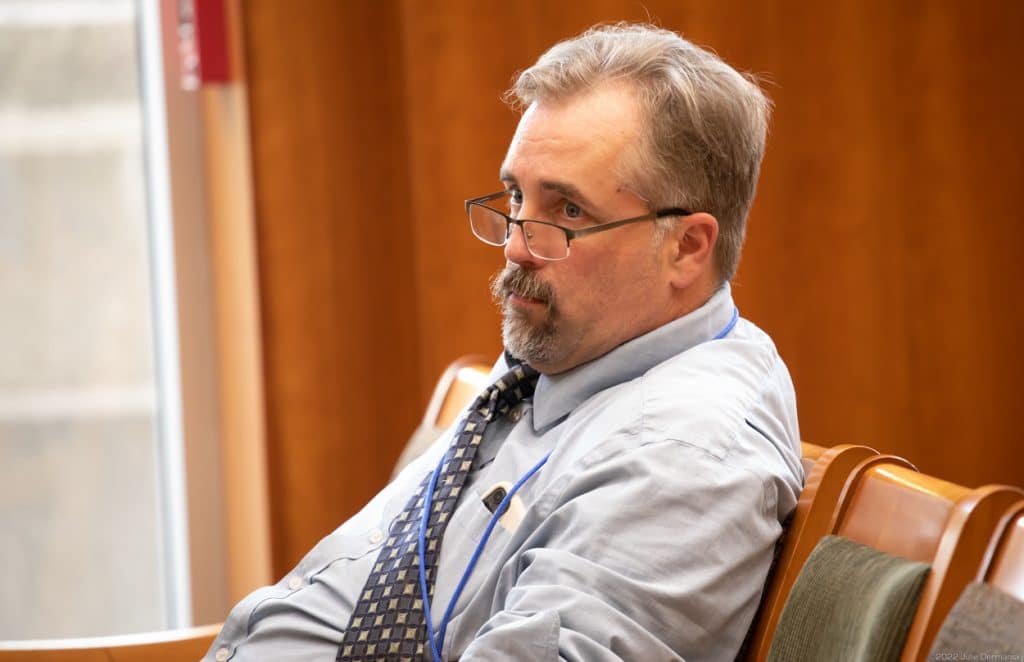
The commission will continue to oversee the state’s orphan well fund, Courreges said, explaining that the agency’s program staff will handle much of the legwork created by the influx of federal funds.
“The oversight is basically, ultimately going to be the federal government.”
The ten-member oversight commission, by state law, includes four members nominated by industry groups and one by a landowners association (plus two from DNR, two nominated by environmental groups, and one at-large member). This setup positions commissioners to oversee spending that might benefit the corporations that employ them. “I work for Apache Corporation,” Commissioner Tim Allen said during an OSR commission meeting in January, referring to a Houston, Texas-based oil and gas company. “We have a plethora of these types of wells on our property, and I’m anxious to work with everybody and let’s make this problem go away for the state of Louisiana.”
In May, Louisiana enacted a state law designed to position the DNR to capture an estimated $200 million in federal orphan well grants — by giving DNR more discretion and allowing it to spend more on plugging low-priority wells.
Separately, DNR also recently asked federal regulators to give the state more authority over permitting new injection wells in the future – giving the state power over so-called “Class VI” injection wells, used for carbon capture. But critics say the feds should be providing more oversight of state regulators, not less.
“Both Texas and Louisiana are applying,” for that new authority over carbon capture wells, Biven said. “And really both Texas and Louisiana are in a state of crisis with their injection wells.”
The Houston Chronicle editorial board penned an editorial this month opposing approval for Texas state regulators. “Might as well let the bank robber guard the vault,” they wrote.
Getting Off the Road to Freshwater City
Orphan well watchdogs have been urging the Interior Department to act now and adopt rules to get out in front of many of the issues on display in the Freshwater City controversy.
For example, federal programs should first test for existing leaks and casing problems and then plug the wells, Ingraffea, the Cornell engineering professor, told DeSmog.
That process, he suggested, can preserve vital evidence – and help regulators figure out which wells actively pose hazards and should jump to the front of the line. He called on federal regulators to adopt that plan in public comments on the new pot of cleanup money in March, he noted.
Guidance released by the Interior Department in April for the first round of funds encouraged states “as a best practice” to inspect for leaks and to “measure or estimate” water contamination before plugging wells – but fell far short of requiring states to do the sort of testing Ingraffea described. States should report on water contamination and other pollution, Interior wrote, but they will be allowed to rely on estimates rather than measurements.
The guidance also allows well plugging programs to rank orphan wells based on factors including “other land use priorities” – a phrase that opens the door to plugging old wells to make it easier and cheaper for oil companies to drill new ones nearby.
Maps of the Louisiana coast show the land surrounding Freshwater City is largely owned by oil and gas giants including ExxonMobil and is located near Henry Hub, Vermilion Parish’s famed pipeline hub, making the area potentially prime acreage for carbon capture projects that play a major role in the oil and gas industry’s favored response to the climate crisis.
Interior wrote that federal rules may be “further refined” after the first round of grants – meaning the debate over prioritization and pollution is hardly over.
Watchdogs have said it’s crucial for federal plugging and abandonment programs to start making oil and gas wells that are actively polluting a top priority.
Because plugging Freshwater City proved so expensive, DNR will be able to seek repayment from two of the oil companies that previously used the wastewater well, making Freshwater City an outlier in that respect. State law allows regulators to seek repayment from earlier operators – but only if costs exceed $250,000. (In general, the capped OSR fund is replenished with fees from oil producers, which bring in about $4 million a year.)
Courreges told DeSmog he didn’t have readily available figures for how often DNR ultimately recouped those costs.The problem too, environmental advocates say, is that it can take time to fight over who pays once things hit that point – and timing matters, particularly when it comes to climate-altering methane leaks and other pollution. They are calling for structural changes across the U.S. to make it harder for drillers to walk away from cleanups – including making drillers pay into trust funds to cover plugging up front. A recent Carbon Tracker report details ideas on how to prevent games of hot potato both on land and offshore.
Right now, the oil and gas industry is relatively flush with funds amid surging oil and gas prices. But the emerging energy transition — as well as the shale industry’s struggles with profitability over the past decade — suggests this won’t always be the case.
Environmental advocates remain deeply concerned about the possibility that funds meant to combat climate change could wind up being used to prepare old oil and gas sites for more drilling or fossil fuel infrastructure. If cleanup funds aren’t prioritized with climate in mind, they warn, the result could be that billions in spending winds up fueling today’s climate fires, rather than fighting them.
“They have all of the information in the priority systems,” Levy said, “but they don’t choose to pick them according to the priority system.”
“It’s a complete fraud on the Louisiana citizens that expect this operation to protect them,” he said.
Subscribe to our newsletter
Stay up to date with DeSmog news and alerts


